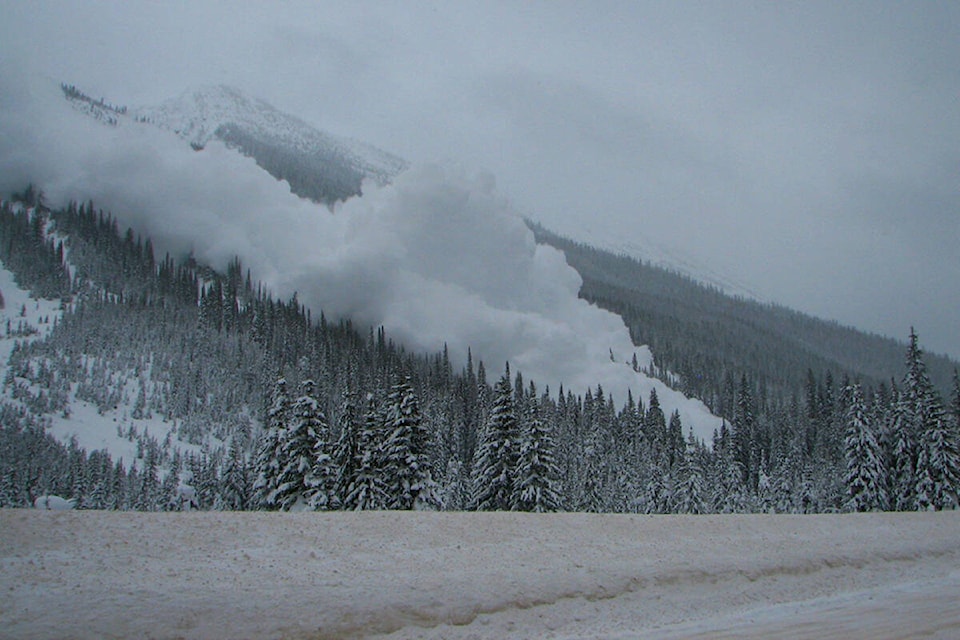Avalanche Canada extended its Special Public Avalanche Warning for most of B.C. and Alberta’s forecast region until Thursday, March 7.
However trouble in the backcountry could persist beyond then.
“After the Special Public Avalanche Warning ends on Thursday, we expect that this layer will still be problematic,” said Avalanche Canada forecaster, Tyson Rettie
It’s been an odd year for the backcountry, and avalanche conditions have been impacted by low snowpack and fluctuating weather. Avalanche Canada forecaster Tyson Rettie explained what’s different in this year’s snowpack and how it’s a separate problem, but still dangerous.
“When people say oh, ‘what is this season like compared to last year?’…the correct answer is it’s different than last year,” he said.
Rettie was hesitant to compare this year’s season to last, because there are several key differences that have developed for a variety of reasons.
The problem last year was a persistent weak layer at the base of the snowpack because of the weather in November. There were two problems that contributed to similar results.
At the base of the snowpack last year, in some areas a ‘crust’ formed.
A crust is defined by Avalanche Canada as “hard layers of snow usually created by liquid freezing on or near the snow surface.” Crusts on the snow aren’t automatically a danger in themselves, but weak layers on top of a crust become an issue because crusts can allow weak layers to slide easily.
The other problem with last year’s snowpack was faceted snow.
“Everyone’s kind of felt faceted snow before. You grab snow up off the ground and you can’t make a snowball with it,” said Rettie.
The snowball is good example of the issue because faceted snow is often referred to as ‘sugary’ and it doesn’t bond with neighbouring snow very well. Snow that isn’t bonded well creates a significant hazard for avalanches because it’s more likely to move.
Last year’s faceted snow, whether it was on a crust or not, became a persistent weak layer deep in the snowpack that made all the snow above it at risk of an avalanche.
The result of the unpredictable snowpack was 16 deaths throughout the winter backcountry season last year.
In contrast, there have been four deaths in the backcountry, two in B.C. and two in Alberta, due to avalanches this season.
According to Rettie, it’s no less dangerous, it’s just different and that’s due in large part to the variety of weather conditions throughout the winter.
Rettie explained that after a significant rain event in December, a cold snap in January threatened to create another persistent weak layer but was disrupted by a “very warm” period later in the month.
“We had this very robust crust that formed as a result of that warm period to mountaintop, or near mountaintop, in many areas,” said Rettie.
Rettie explained that in recent weeks, as more snow has fallen, it’s created a layer of faceted snow, as deep as 10 cm in some areas, above the crust.
Over time, he explained, an issue like this can become less active, but he reiterated that the conditions could vary depending on location. In some areas, the issue is already beginning to ease, but once the special warning ends, the layer is expected to still be problematic for the Columbia Mountains region.
“A very substantial rain event to mountaintop,” is another potential factor that could help the problem. However, he added that more rain could just as easily create separate and new issues.
Ultimately, the future risk of the current snowpack is in the hands of weather and time.
The best practice to avoid consequences of the current weak layers is to follow Avalanche Canada’s recommendation, which is to make “conservative” terrain choices. Sticking to lower angle slopes and avoiding overhead hazards is best practice as remote triggers are a present risk.
Avalanche Canada advised all backcountry users to always bring a beacon, probe, and shovel, and not to underestimate the instability, despite the appeal of the fresh snow.
READ MORE: Legion lockout: Revelstoke Legion temporarily closed
